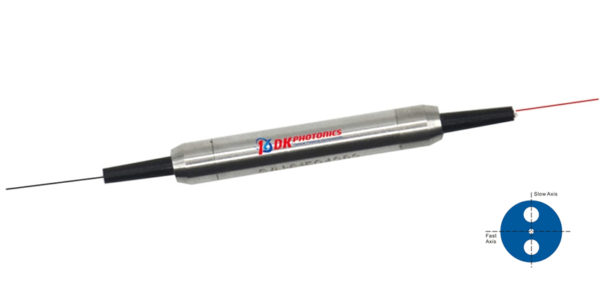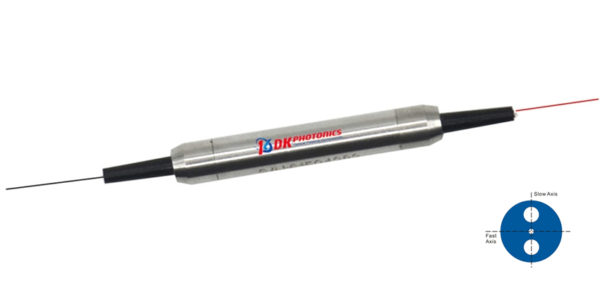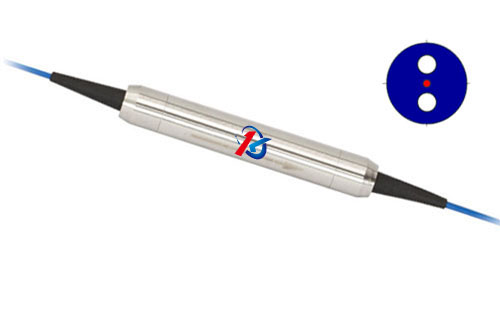Introduction
Optical systems play a crucial role in various industries, from photography and telecommunications to medical and scientific fields. These systems rely on the precise manipulation of light to achieve desired outcomes. In-line polarizers, a type of optical component, have gained significant importance for enhancing optical systems. In this article, we will explore the fundamentals of in-line polarizers, their functioning, and how they can be effectively used to improve optical setups.
Understanding Optical Systems
Before delving into in-line polarizers, it is essential to understand the basics of optical systems. An optical system is a collection of components that interact with light to modify its properties, such as direction, intensity, or polarization. Common optical elements include lenses, mirrors, filters, and polarizers, all working together to control light behavior.
What are In-line Polarizers?
An in-line polarizer is an optical device used to filter and transmit light of a specific polarization while blocking light with different polarizations. It allows only the desired polarized light to pass through, resulting in more controlled and refined optical output.
Importance of In-line Polarizers in Optical Systems
In-line polarizers are invaluable tools in optical systems due to their ability to manage light polarization. By selectively allowing certain polarizations, they enable better control over optical pathways, leading to improved image quality, reduced glare, and enhanced signal transmission.
Types of In-line Polarizers
There are several types of in-line polarizers available, each with its own unique properties and applications. Some common types include:
Polaroid Sheets
Polaroid sheets are made of stretched polymer material that selectively transmits polarized light. They are cost-effective and find use in photography and 3D glasses.
Wire-grid Polarizers
Wire-grid polarizers consist of fine metal wires arranged in a grid pattern. They are widely used in LCD displays and imaging applications.
Glan-Taylor Prism Polarizers
Glan-Taylor prism polarizers utilize birefringent crystals to separate polarizations. They are commonly used in laser systems and polarimetry.
Glan-Laser Prism Polarizers
Glan-Laser prism polarizers are an enhanced version of Glan-Taylor polarizers, providing better performance at higher laser power levels.
How Do In-line Polarizers Work?
The working principle of in-line polarizers is based on the selective absorption and transmission of polarized light. When unpolarized light passes through an in-line polarizer, only the component with the desired polarization orientation can pass through, while the orthogonal component is absorbed or blocked.
Factors to Consider When Choosing In-line Polarizers
Selecting the right in-line polarizer for a specific application requires considering various factors:
Wavelength Range
Ensure that the polarizer operates within the required wavelength range for your optical system.
Polarization Efficiency
Higher polarization efficiency leads to better light control and minimal loss of light intensity.
Extinction Ratio
A higher extinction ratio indicates better polarizer performance in blocking undesired light.
Temperature Stability
Some applications demand polarizers with excellent stability under varying temperature conditions.
Applications of In-line Polarizers
In-line polarizers find versatile applications in different industries:
Photography and Camera Lenses
In-line polarizers help improve color saturation and reduce reflections in photographs.
LCD Displays and Monitors
They enhance the contrast and clarity of images displayed on LCD screens.
Fiber Optics Communication
In-line polarizers play a role in maintaining polarization alignment in fiber optic communication systems.
Laser Systems
They are vital components in laser setups, ensuring precise polarization control.
Microscopy
In-line polarizers aid in extracting valuable information during polarized light microscopy.
Tips for Enhancing Optical Systems with In-line Polarizers
To make the most of in-line polarizers, consider the following tips:
Proper Alignment
Ensure accurate alignment of the polarizer within the optical system to achieve optimal performance.
Maintenance and Cleaning
Regularly clean and maintain polarizers to avoid performance degradation due to dust or debris.
Polarizer Combinations
Experiment with different combinations of polarizers to achieve specific polarization states.
Dealing with Light Loss
Account for light loss when designing optical setups with in-line polarizers.
Common Challenges and Troubleshooting
While using in-line polarizers, some common challenges may arise:
Glare and Reflections
Improper placement of polarizers can cause unwanted glare and reflections.
Polarizer Damage
Physical damage to polarizers can lead to decreased efficiency or complete failure.
Compatibility Issues
Ensure compatibility between polarizers and other optical components in the system.
Conclusion
In-line polarizers are indispensable tools for enhancing optical systems across various industries. With their ability to control light polarization, they enable improved image quality, reduced glare, and enhanced signal transmission. By understanding the different types, working principles, and factors to consider, one can effectively leverage in-line polarizer for their specific optical requirements.


